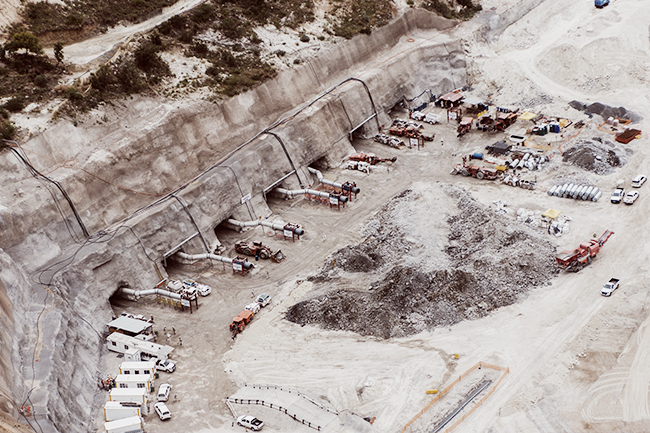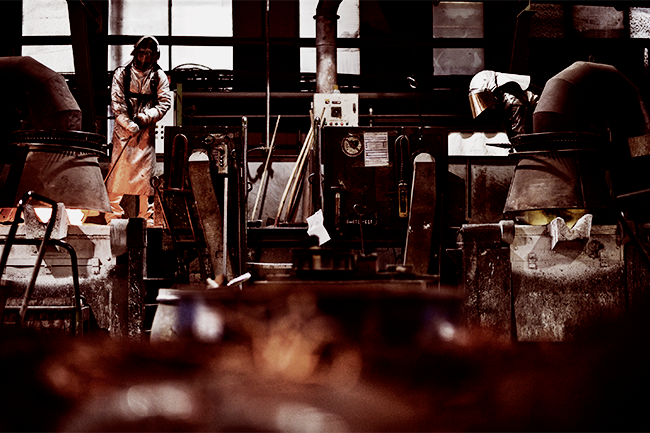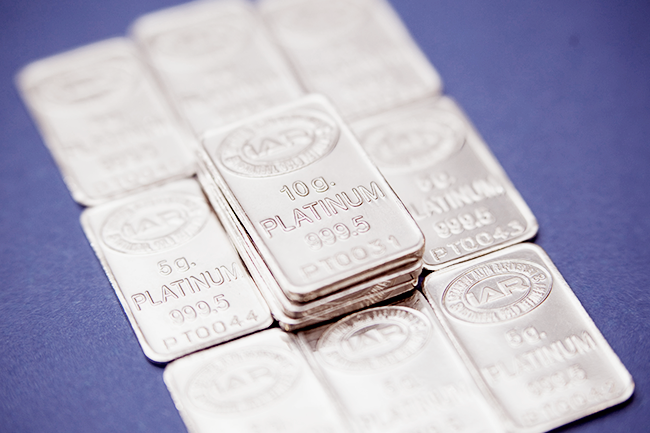Not everyone believes the problems facing portions of the platinum mining industry in South Africa are a product of unsustainably low global prices. It is true, though, that the price of the metal is in a trough at around US$830 per ounce at present – almost half of what it was in January 2013 and only just more than a third of its all-time high (US$2,250), achieved just before the 2008 crash.
‘The platinum group metal prices are not particularly low,’ says Andrew Lapping, chief investment officer at Allan Gray. He points out that ‘prices were unsustainably high in 2008 but collapsed during the financial crisis and have trended steadily upwards [since then], particularly when measured in rands’. He adds that, adjusted for US inflation, platinum is a little below its 25-year average (US$1,125) but when this is converted to ZAR, the metal’s price is ‘well above the long-term average’.
This may be true, but the country’s industry is nevertheless experiencing pain. This is heavily concentrated in one area, the north-western limb of the igneous Bushveld Complex around the town of Rustenburg. Older, so-called ‘generation one’ shafts, operated by the world’s second- and third-largest platinum miners, Impala Platinum (Implats) and Lonmin, have been subsidised by more profitable operations for some years now.
Former mining engineer Lawrence Williams argues that a combination of militant trade unions and government pressure mean that platinum miners find it ‘easier to try and keep the mines operating, at almost any cost’. The situation was worsened, he says ‘by the mining companies focusing on maximising production in the hope of lowering their costs and this adding output at a time when markets are weak’.
Now, in 2018, the situation has become unsustainable for Implats and Lonmin. Both announced massive retrenchment programmes. Implats stated in August that it will close five (out of 11) shafts and retrench 13 000 workers in the next two years (out of a total workforce of 40,000). It intends cutting production from 750,000 oz to 520,000 oz. Implats already shed 2,500 jobs in the year to June. Lonmin, which is in the process of finalising a deal where it will be acquired by Sibanye-Stillwater, is already in the process of cutting 12,600 jobs. Sibanye-Stillwater regards these job cuts as a non-negotiable precondition for the deal. Since 2008, when platinum mining provided employment for 200,000 South Africans, this figure has fallen to 170,000. Furthermore, it can be expected to drop again once the job cuts are implemented.

Lapping argues that, while the price of the metal has not been the problem, costs of production at the Rustenburg mines have risen steadily. Looking only at Impala’s assets, his analysis finds that the production price per ounce rose 16%, on average, every year from 2008 to 2017. In 2008, an ounce cost ZAR3 629; in 2017, the cost was ZAR13,588. Even adjusted for inflation and with some cushion from a weaker rand, this created a ‘very difficult situation’, he says.
The Implats announcement was greeted with outrage from South Africa’s Mineral Resources Minister, Gwede Mantashe, who condemned it as a ‘clear example of a company that is careless, and mindlessly committed to implement its predetermined outcome, no matter how unworkable that might be’. The dominant trade union in the platinum sector, the Association of Mineworkers and Construction Union has threatened to bring all of Implats’ South African mines to a halt and suggested the five threatened shafts be nationalised by government. The company, however, made it clear that it had expected this sort of response and believed it had no alternative.
The Rustenburg mines supply about 30% of world platinum supply, according to Standard Bank mining equity analyst Leroy Mnguni. However, this proportion is expected to drop as years of under-investment and falling grades come home to roost. ‘Significant capex cuts in this region over the past five years and depleted reserves have undermined production sustainability,’ Mnguni said in a note earlier this year.

He expects the Rustenburg mines to be producing 234,000 oz less by 2021. This might seem small next to the 4.3 million oz produced by South Africa (2016 figure – the latest – from the World Platinum Investment Council), but the truth is that platinum is in oversupply and, if its price is to remain where it is or rise, mining capacity needs to be taken out of the market.
This has to affect South African mines, which, in total, account for around 70% of global production.
Earlier this year, the World Platinum Investment Council, in its annual review of the industry, expects surplus (above demand) platinum production for 2018 to be 180,000 oz, which is at least an improvement on 2017, when it was 315,000 oz. Most platinum is used for exhaust catalysts for diesel engines. But demand for diesel vehicles has plunged since the Volkswagen emissions scandal of 2015.
That was when the German car manufacturer was exposed in the US for having a software device in its diesel engines that could detect when it was being tested and change performance to produce better results. Germany considered banning diesel vehicles for cities. The scandal particularly affected sales in Europe, the only market where diesel was the dominant fuel of choice for saloon cars and SUVs.
In February, diesel sales were down 12.8% year-on-year in the European market, while petrol vehicles were up 16% and alternative fuel vehicles by 18.5%. The face of the future appears to be electric vehicles (EVs) based on lithium ion batteries – which do not contain platinum. A platinum-using alternative – hydrogen cell technology – has fallen far behind.

Platinum prices have been maintained by stockpiling the surplus metal mined, but this cannot go on indefinitely. Over-supply is also exacerbated by the metal’s success as an autocatalyst. It is estimated that about a quarter of the annual platinum supply comes from the recycling industry.
Quite what the future holds in unclear. The platinum jewellery market remains relatively constrained and is mostly located in China. The signs are that consumers tend to buy platinum on a speculative basis rather as a serious competitor to gold as a store of value.
In the automotive industry, platinum seems to have lost out to the closely-rated palladium, which provides autocatalysts for petrol engines.
Williams observes that in 2017, driven by petrol-engined vehicles taking market share from diesel, the price of an ounce of palladium was higher than that of an ounce of platinum, for the first time since 2001.
According to Williams, platinum and palladium are to a degree interchangeable in their role as autocatalysts. The lower price of platinum may be a motive for the technical developments necessary to make it work in petrol engines, he suggests.
Despite uncertainties, all is not doom and gloom in platinum mining. Some producers, such as the world’s biggest platinum miner, Anglo American Platinum (Amplats), are doing so well that they are looking for new assets. The company sold its underground assets to Sibanye-Stillwater in 2015 and concentrated its efforts in South Africa solely on one operation, the gigantic open-pit Mogalakwena mine.
Amplats’ retrenchments did not attract the same opprobrium that Implats incurred for its recent announcement. Before selling to Sibanye-Stillwater, Anglo cut the workforce at its Rustenburg operations from 16,500 to 7,500.
It also closed shafts – most notably the Bokoni mine, which was placed on care and maintenance in 2017.
Lapping says that in 2003, Mogalakwena accounted for 13% of Amplats’ cash flow. Today it accounts for 90%. In 2018, Amplats has a solid balance sheet, posting an after-tax profit of ZAR2.28 billion. The company also paid an interim dividend of ZAR1 billion in 2018, the first since 2011.
Indeed, while Implats and Lonmin retrench and cut production, Anglo is looking to expand. It intends buying out its partner in the undeveloped Der Brochen asset near Steelpoort in the Limpopo province, and linking this ore body to the neighbouring Mototolo mine, which it owns. It’s one of the highest-margin platinum mines in the world with a profit margin of 43%.
Lapping points to the primary consideration – productivity, which he says has ‘collapsed in underground platinum mining’. By contrast, in open-pit extraction, economies of scale and mechanisation have made it possible to reap efficiencies and maintain productivity. This suggests an industry going in two different directions – underground mining, which is a high-risk game, and opencast mining, where better returns on investment are likely.








